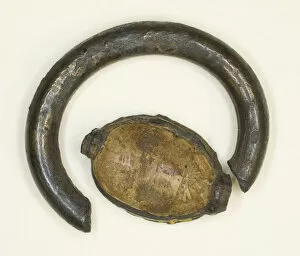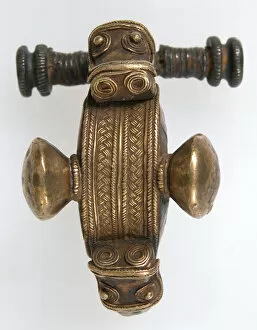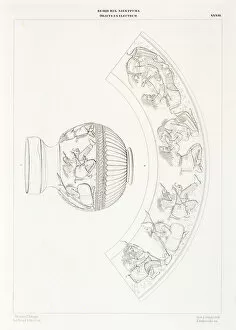Electrum Collection
"Electrum: A Glimpse into Ancient Treasures" Step back in time and explore the captivating world of electrum
All Professionally Made to Order for Quick Shipping
"Electrum: A Glimpse into Ancient Treasures" Step back in time and explore the captivating world of electrum, an intriguing alloy of gold and silver that held great significance in ancient civilizations. From Hecta coins depicting the goddess Demeter to statuettes of the god Horus, these artifacts offer a window into the rich cultural heritage of various societies. One such artifact is the Stater coin from the 5th century BCE, featuring a crouching dog. This enigmatic symbol raises questions about its meaning and role within society during that era. Similarly, a coin portraying Apollo showcases the reverence for this powerful deity around 357-353 BCE. Traveling to Egypt, we encounter fascinating pieces like a ring from the New Kingdom-Third Intermediate Period. Its intricate design transports us to dynasties long past, evoking images of pharaohs and their opulent lifestyles. Another remarkable find is a cowroid ring adorned with a sistrum and pendant uraeui, providing insight into religious practices during Egypt's New Kingdom. Venturing further north, we discover a Baltic or Scandinavian bow brooch from the 7th century. Crafted by unknown hands, it exemplifies exquisite craftsmanship prevalent in those regions at that time. The allure extends beyond jewelry and currency; it also encompasses artistic expression. A round medallion plate describing Cybele captivates with its intricate details dating back to the 2nd century BC—an anonymous master skillfully immortalizing this revered figure. A Graeco-Scythian vase showcasing Scythian activities offers glimpses into their way of life during the 4th century BC—a testament to how art can bridge gaps between cultures separated by vast distances. Noteworthy among these treasures is Prince Meskalamdur's Babylonian helmet—a symbol of power and protection worn by royalty centuries ago—reminding us of their valor on ancient battlefields.













